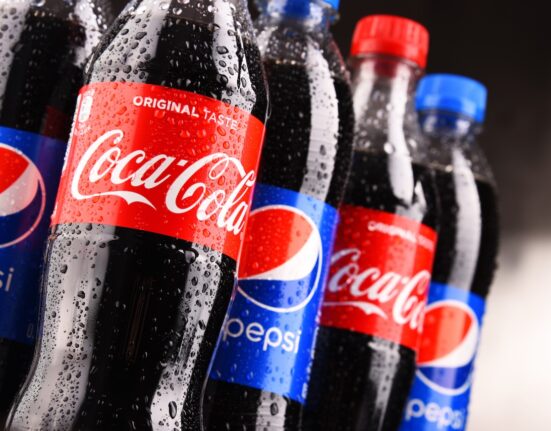Avocados have undoubtedly been one of the stars of the fruit category in North America over the past decade. At the forefront of the sector is Mission Produce, an Oxnard, CA-based company established in the early 1980s by Chief Executive Steve Barnard and Ed Williams. The son of a citrus farmer in Ventura County, Barnard took numerous summer jobs at produce companies while studying agricultural business at Cal Poly, working his way up in the sector before eventually sharing an avocado packhouse.
Barnard has since transformed Mission Produce into one of the world’s biggest and most recognizable avocado companies that has been a pioneering force in the industry, launching a variety of new products and ventures as it expands rapidly in numerous supply regions around the world. In 2020, it became one of the few fresh produce companies to launch an IPO, listing on the NASDAQ stock exchange.
Here the executive discusses the potential for further growth in avocado consumption, volatility in the U.S. market, and whether he thinks global supply and demand will be in harmony.
The following interview has been edited for clarity and brevity.
You worked your way up in the industry from the bottom. What gave you the faith to keep going and create what you have built today?
If you don’t believe in yourself, no one else will. I’ve never been short of confidence. Sometimes I’m overconfident and get humbled.
Also, by starting at the bottom like we did, we were doing everything, loading trucks, working in the field, in sales — we were doing it all. We just saw an opportunity, and we took it, and we are still taking it and creating that opportunity with new horizons such as Asia and Europe. There are a lot of opportunities out there, you just have to have the wherewithal and be in a position to make a difference. If it was easy, everybody would be in this space. And you can’t be afraid to lose, or you will miss great opportunities.
What drove your decision to begin growing blueberries?
We’ve partnered with a prominent player in the berry market to grow and pack blueberries in Peru, so they do the marketing and distribution. A major reason we began growing and packing blueberries was to provide year-round work for the approximately 5,000 employees we have in the country who were previously just working in the avocado space. The Peruvian avocado season typically only lasts from late March to September, and so instead of sending them home, we wanted to keep people working. It has turned out to be a good opportunity. Peru appears to be a great location to grow blueberries.
We have about 400 hectares today, and we’re looking to expand that in different areas. We are planning on increasing this over the next few years.
Might Mission Produce expand into other fresh produce categories?
A couple of years ago we entered the mango category, and we’ve been increasing that business year-over-year with more volume and new customers. Our advanced global network enables us to ripen and distribute mangos year-round, as we do with avocados. We are focused on those commodities for now and continuing to do them well.
After you established Mission Produce around four decades ago, what factors helped you to bring it to where it is today?
There were three big things that happened. The first was globalization — the opening of the Mexican border into the U.S. in 1997 — which gave the consumers here in the U.S. Hass avocados year-round. This led to an increase in consumption as we were able to offer a better product consistently. We shifted away from the green skins, which are generally not as desirable to eat and typically have a shorter shelf life when shipped. The green skins were phased out here in the United States, and we think that may happen in Europe too in time.
The second thing — and we led the charge on this — was ripe avocados. Packers back then were only pre-conditioning, so avocados weren’t typically ready to eat off the shelf. Our ripe programs are really what catapulted us to the front of the category here in the U.S. Now we are trying to do it in Europe, China, Japan, Korea and everywhere else by providing ripe Hass avocados year-round — that is the trick.
The third aspect is the health benefits. Avocados had a bad reputation back in the 1970s because people thought they had cholesterol and wouldn’t eat them. But by doing the research, the industry found that they don’t have any cholesterol. They actually have monounsaturated fat, which is good for your heart, and they’ve got fiber and potassium. So, it changed the whole perception of the avocado. The avocado went from being bad to good, and we just happened to be in a position to ride the wave.
You’re opening a new facility in the UK. What growth opportunities do you see in that market and more widely in Europe?
Europe is a huge opportunity. Its consumption is growing — over the last decade market growth was about 12% every year, and its per capita is still only about three pounds, according to May 2022 data by Rabobank. I’m confident that the UK can develop similarly to the United States — I think they’re going to catch up. Our new facility in the UK is positioned to complement our facility in the Netherlands. We’re focused on opportunities to expand on the mainland, and we think we can get consumption moving in the right direction.
When we started business here in the U.S., the USDA reported per capita consumption at about two pounds, including the green skins. Now we have the Hass-type variety, which has better flavor and durability. The Hass Avocado Board reports current U.S. consumption to be at 8.6 pounds, and I think that we can continue heading in that direction in Europe and Asia.
How has your Chinese joint venture been going?
It was affected by COVID-related challenges for the past couple of years, but things are getting better. Again, there’s a huge opportunity there. We’ve already got one distribution center there with our joint venture partner, and we have future plans to expand.
It is very common to have noodle soup with lunch and/or dinner prior to a meal in China. When I am there, I always take a couple of avocados from the distribution center to lunch, and I’ll cut an avocado up and put it on the plate in chunks. We put the avocado in the soup.
And the locals consistently say that it’s very good. If consumers included an avocado in their meals like this every day, the market for avocados could increase tremendously. It just takes time, and in many cases you kind of have to set the bait out there. You kind of have to let the game come to you. So, when I say there’s a huge opportunity, it’s unlikely to be overwhelmingly fast. I think it will be slow. You can’t push it through, you have to pull it through with value and creativity over the long term.
Mission Produce’s avocado volumes have grown at an average annual rate of around 9% over the past decade. Do you see that growth continuing?
We continue to invest. We’re not resting on our laurels. We see more opportunities ahead around the world, but obviously you’ve got to be strategic. You can’t just show up and expect it to be great. It takes research, it takes planning, it takes the right people. Again, we want to pull it through the system with demand — not push it through with price.
Being a company that already has a high level of vertical integration, do you see a need to have higher levels of fruit from proprietary farms?
Our significant proprietary avocado production is mainly for strategic purposes, to cover the calendar. We have a guaranteed supply, but it still only represents 19% of our overall volume. We still use mostly outside growers, but we have enough of our own avocados to be able to guarantee a price and volume for certain times of the calendar where there may be gaps in supply. And we make sure we always have enough product at least to make commitments.
What are your thoughts on the future of the California avocado industry?
We do not expect to see significant growth in the California industry. There’s not much more land to farm, and with rising input costs, we see a lot of commercial growers changing their farming practices in an effort to produce more fruit per acre. The key to success for any California grower is to produce high yields while being as efficient as possible, and we have invested in a team to support them. In fact, many California growers experienced some of their highest historical fruit returns in 2022.
That said, many consumers still look for locally grown produce when it is available. Avocados grown on the California coast are a perfect fit for our West Coast markets. Our business started in California, and although California avocados now represent less than 10% of the avocados consumed in the U.S., they continue to be an important part our business. California produces high-quality avocados and our professional growers are here to stay.
What is driving some growers to switch from citrus to avocados?
Historically, avocados have been more profitable if you’re in the right area. However, avocados can be harder to grow than citrus, and they can be less consistent than citrus. Citrus is pretty consistent year-to-year on volume, whereas avocados are an alternate-bearing fruit.
Peru has seen amazing growth in avocado production over the past few years.
Do you see it continuing to expand at a similar rate?
Peru has more land than they should plant. Peru’s season is condensed because it is warmer day and night. We can hold the crop in California on the trees for up to six months between start and finish at the harvest, and in Peru, you’ve got about three to four months. It’s just a condensed season, so you have to be careful that you don’t overload yourself.
A lot of these guys plant a couple of hundred hectares of avocados, without really knowing where it will go. Where in our case, we work it backward. We started out in the distribution business, and now we’re in production to fill the need for distribution rather than starting out with the supply business and figuring out where we’re going. So we pull it through the system, whereas others push it with price.
Last year was quite a volatile one for the U.S. avocado market. Do you expect volatility to be a regular occurrence well into the future?
Well, it’s all based on supply for the most part. Mexico supplies about 80% of the U.S. market. Last year they had a very low crop, and they were still sending many millions of pounds a week, but it was just enough below the demand market to drive those prices up. This year, the industry crop out of Mexico has been larger. But this is why we are investing around the world, to make sure we have a backup plan and consistent supplies.
One of the newer supply countries to the U.S. is Colombia. What is your outlook for there?
I believe they’re coming up. The last saw in Fruit Trop’s World Avocado Statistics Magazine was that there are something like 42,000 hectares planted. That’s a lot. So even though they’re not a very big supplier at the moment, they have the potential to be very relevant.
What kind of impact do you think the entry of the Mexican state of Jalisco will have on the U.S. market?
Well, I think it’s a good thing. The Jalisco growers are generally larger, and they’ve got an economy of scale. That means they can do a better job than somebody that’s got only four hectares. It’s just the nature of the beast. And they do peak at different times than Michoacán because of elevations. And they’ve got a couple of different flowers and different varieties. They have a couple of supply peaks in Jalisco. That should contribute to the stability of the market.
What future do you see for the Hass variety?
I think the Hass variety will continue to dominate. As I mentioned earlier, I think we may see a transition with a reduction of green skins offered in the marketplace. There are some areas that grow a fair amount of green skins, such as South Africa and Israel, and I think that will continue to change by either grafting them over or replanting them –which would yield more of a Hass-type variety. There are some variations of Hass — some come early and some come later — but this would create a Hass-type, Hass-looking, Hass flavor, good-shipability fruit that can be distributed around the world, whereas green skins are pretty limited because they have thin skins and a watery flavor rather than a rich oil flavor.
Do you see future demand being in harmony with future supply levels globally?
Agriculture has a tendency to see a good thing and then over-plant it. The key is — how fast is consumption going to continue to grow? Levels may balance in the future, but it’s unlikely we’ll see that all year long, due to the varying avocado seasons around the globe. There will be specific months where there may be too much, which will need adjustment.
We are being pretty strategic. We’re vertically integrated in Peru, we’ve got a development going on in South Africa now, and we continue to develop Guatemala and Colombia. We know where those are going to go and what time of year they’ll go there, so we’re working it backward from the marketplace. Will every day be perfect? No, but we have a pretty good idea of where it’s going to go and when. I can’t say that all growers around the world have that plan.
Is there any way you think that U.S. retailers could further increase avocado sales?
The demand appears to be pretty steady. Education on the health benefits of avocados can keep them top-of-mind for consumers. And putting avocados on advertisement, like they were prior to the Big Game, can typically lead to a bump in consumption. Cross-promotional displays at retail can also catch their attention. This is especially important because our Mission Produce Avocado Intel found that one-third of avocado purchases happen on impulse.
I also think more creativity is needed on how to eat them. You can have them for breakfast, lunch or dinner. Sliced avocado with scrambled eggs is great. Avocado toast is great. An avocado sandwich at lunch is great. An avocado in your salad at dinner is great. Avocados are very versatile for consumption.
In a few words, what is your outlook for Mission Produce and the avocado industry?
I think we are in a good category. We’re in a good position within the category, and we’re going to continue to play offense. There are still a lot of uncharted waters out there.





